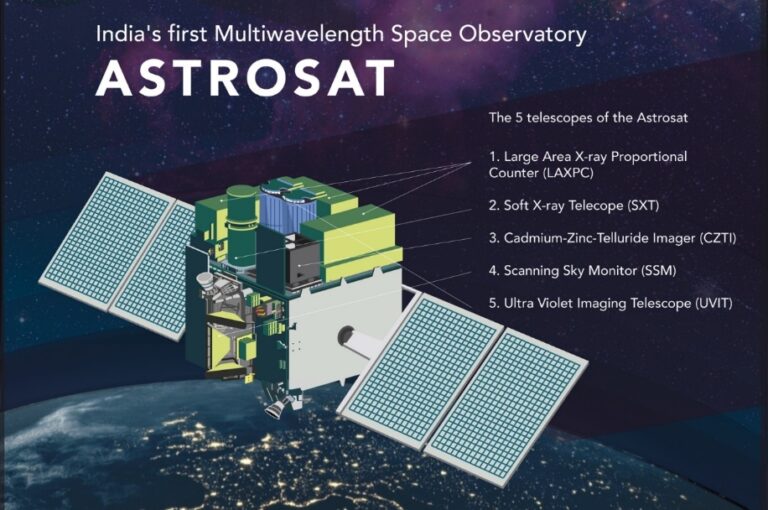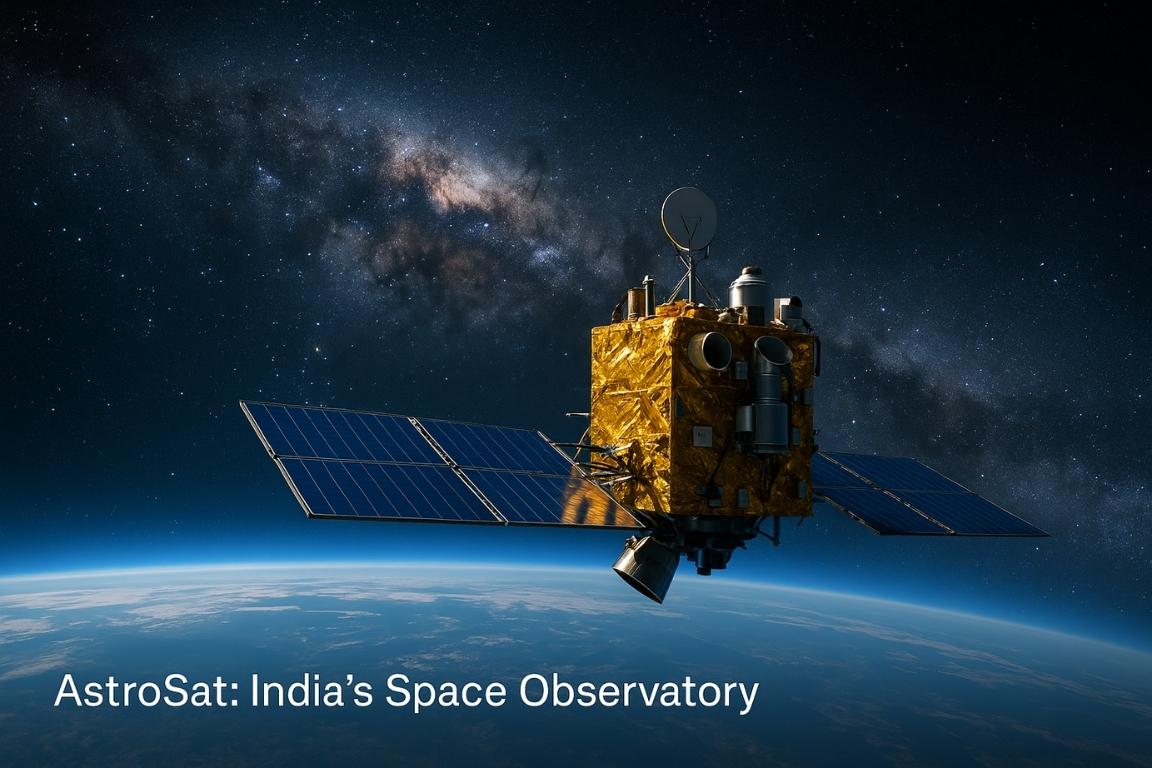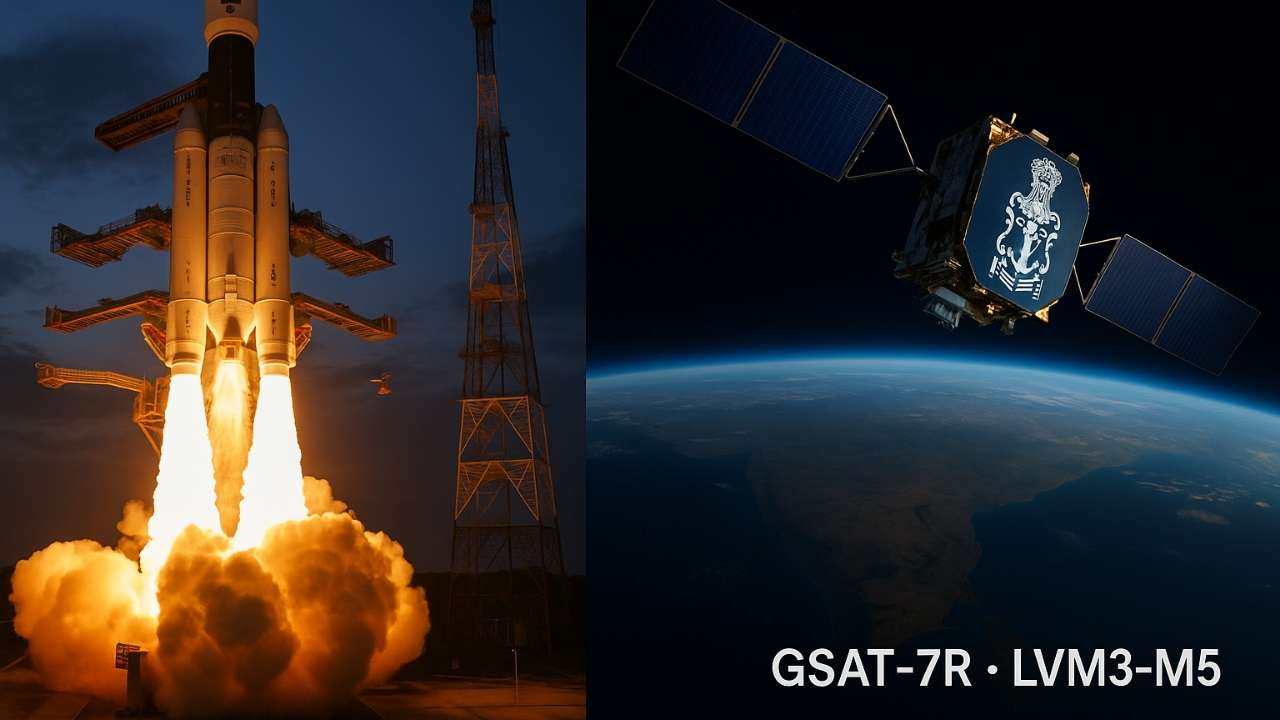AstroSat, India’s first dedicated space-based astronomy observatory, has completed 10 years in orbit since its launch on September 28, 2015.
What is a Space Observatory?
- A space observatory is a satellite-based telescope that observes celestial objects beyond Earth’s atmosphere.
- It helps scientists study light from distant stars, galaxies, black holes, and cosmic phenomena without interference from Earth’s atmosphere.
- Examples: Hubble Space Telescope (NASA), Chandra X-ray Observatory, AstroSat (India).

About AstroSat
- Launch Details: Launched on September 28, 2015 by PSLV-C30 from Sriharikota. Mission led by ISRO, designed for multi-wavelength observation.
- Objective: To study the Universe across multiple wavelengths — from Ultraviolet (UV) to X-rays. To perform simultaneous observations of cosmic sources.
- Payloads (Instruments):
- Large Area X-ray Proportional Counter (LAXPC) – studies high-energy X-ray sources like black holes.
- Soft X-ray Telescope (SXT) – focuses on soft X-ray sources.
- Scanning Sky Monitor (SSM) – tracks variable X-ray sources.
- Collaboration
- Joint effort of ISRO and top Indian research institutes like IUCAA, TIFR, IIA, RRI, and foreign partners from Canada and UK.
Major Achievements
- Detected far-ultraviolet (FUV) photons from galaxies 9.3 billion light years away.
- Studied black holes, neutron stars, and stellar explosions.
- Observed Proxima Centauri, the nearest star to Earth.
- Contributed significantly to high-energy astrophysics research.
- Generated over 2,500 research papers and datasets used globally.
India’s Upcoming Space Observatory Projects
- XPoSat (X-ray Polarimeter Satellite) – to study X-ray polarization from cosmic sources (launched in 2024).
- Aditya-L1 – India’s first solar observatory, launched in 2023, studies solar corona and solar winds.
- INSPIRESat Series – for atmospheric and space weather studies.
- Future Plans – ISRO aims to build next-gen observatories for infrared and gravitational wave studies.
Global Context
- India joins nations like the US, Europe, and Japan with advanced space observatories.
- AstroSat’s success boosts India’s capacity for deep-space science missions.
Conclusion
AstroSat marks India’s entry into space-based astronomy, offering global scientists rich data on the universe. Its continued performance beyond its lifespan highlights India’s engineering excellence and growing role in space science research.





